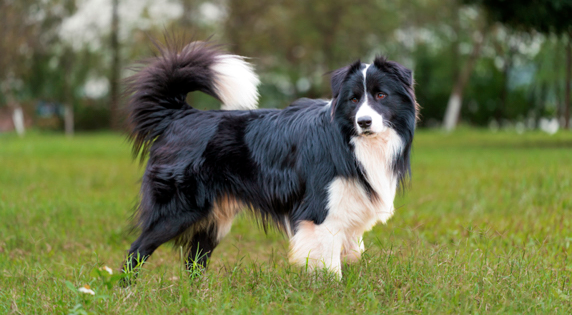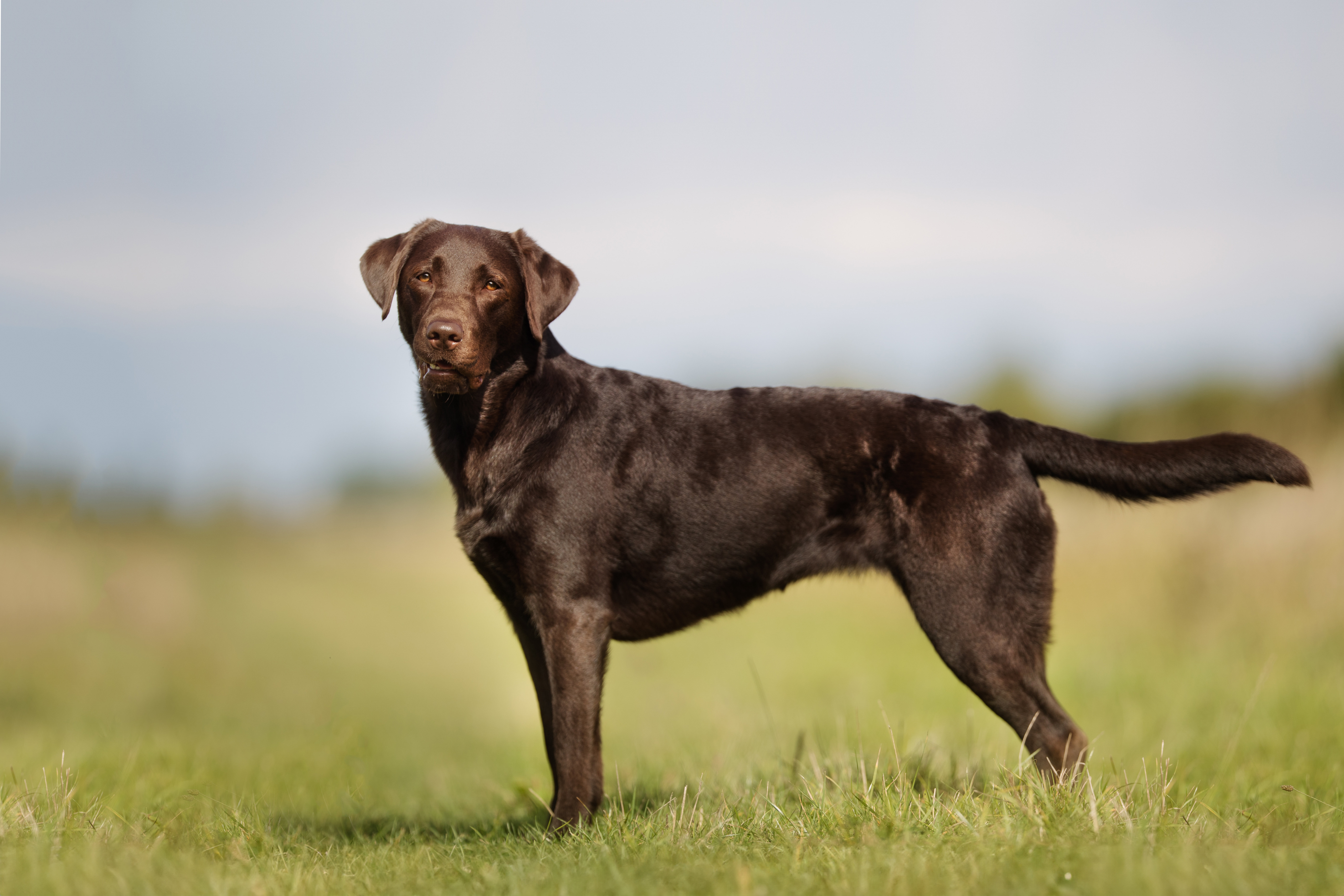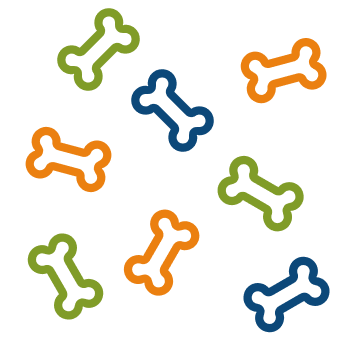
What is the best dog food?
The answer to the above question is subjective and depends on your own preference and that of your dog. We’ve made an overview of the most popular diets in every category, using our extensive range of dog foods.
The Border Collie is an intelligent and energetic dog, renowned for its exceptional herding abilities. This breed originates from the border region between England and Scotland (hence the name “Border”). It was bred specifically for herding sheep, with a focus on speed, agility, and work ethic. The Border Collie has a medium-sized, athletic body with a lean, muscular build suited for agile movements and features a double coat. Their sharp intelligence and need for exercise make them ideal for active owners who can dedicate time to training and mental stimulation.

The Border Collie originates from the border region between England and Scotland, where it has been bred for centuries as a herding dog. The breed was developed to herd sheep and excel in endurance, agility, and intelligence. Border Collies were valued for their natural ability to work with livestock, often responding to subtle signals from their owners. They likely descend from working dogs brought by the Vikings, crossed with local sheepdogs. Their exceptional work ethic and “eye” (the intense gaze used to control livestock) make them highly regarded as herding dogs and companion animals worldwide.
The Border Collie is known for its exceptional intelligence, energy, and strong work drive. It is alert, eager to learn, and naturally inclined to herd. This breed is highly loyal to its owner and very focused but can also be sensitive and reserved around strangers. Border Collies require significant mental and physical stimulation and thrive in an active environment where they are given tasks and challenges. Without sufficient activity, they can become bored and develop unwanted behaviours. Their adaptability and determination make them excellent working and sports dogs.
The Border Collie is a medium-sized, slender dog with an athletic and symmetrical build designed for speed and agility. It has a deep chest, strong legs, and a straight back. The coat can be short or medium-length, is weather-resistant, and often has a double layer. Colours vary, with black-white being the most common, but other combinations such as red-white, blue-white, and tricolour also occur. The ears can be semi-erect or fully hanging, and the eyes are usually brown, though blue or mixed eye colours are also possible. Its characteristic intense gaze (“eye”) is particularly notable when herding.
The Border Collie requires a minimum of 1.5 to 2 hours of intense physical activity daily. This extremely energetic breed needs more than just long walks or running; it also requires mental stimulation to remain happy and healthy. Activities such as fetch, agility training, obedience training, and puzzle games are ideal to meet its needs. Without enough exercise and challenge, a Border Collie can quickly become bored, leading to unwanted behaviours such as excessive barking or destructive tendencies.
The Border Collie requires regular care to stay healthy and happy. This includes brushing its weather-resistant coat 2–3 times per week to remove tangles and loose hair. During shedding season, daily brushing may be necessary. Regularly check and clean the ears, eyes, and teeth to keep them healthy. Trim the nails when needed. In addition, the breed requires 1.5 to 2 hours of exercise and mental stimulation daily, such as training or interactive games. Routine health check-ups and preventive parasite treatments are also important.
The Border Collie is generally a healthy breed, but some hereditary health issues can occur. Common conditions include:
Collie Eye Anomaly (CEA): A genetic eye disorder affecting the retina, choroid, and optic nerve, potentially leading to vision impairment.
Progressive Retinal Atrophy (PRA): A degenerative eye disease that can result in blindness.
Hip Dysplasia: A joint condition causing instability and cartilage wear, leading to discomfort and mobility issues.
Epilepsy: Some Border Collies may develop epilepsy, causing seizures.
MDR1 Gene Mutation: A genetic mutation that makes some Border Collies highly sensitive to certain medications.
Routine veterinary check-ups and genetic screening from responsible breeders can help reduce these risks.
Breeds similar to the Border Collie often share a strong work ethic, intelligence, and herding instincts. Examples include:
When purchasing a Border Collie, it is important to choose a reputable breeder who conducts health screenings, particularly for hereditary eye conditions. Proper upbringing and socialisation are also crucial.
The price of a Border Collie can vary depending on factors such as breeding care, pedigree, and health testing. A lower price may indicate less attention to important aspects such as genetic screening and early socialisation.
It is always advisable to choose a recognised and responsible breeder who prioritises the long-term health and well-being of your new companion.
What Type of Owner Is Best for a Border Collie?
The Border Collie is an intelligent and energetic dog with specific needs and characteristics. If you are considering getting a Border Collie, it is important to understand what is required to properly care for this breed. Below are some key points to help determine if this dog is a good fit for you:
The Border Collie is suitable for an owner who:
Overall, the Border Collie is best suited for someone with an active lifestyle who can provide the time, attention, and mental stimulation this breed requires.
The Border Collie is better suited for experienced owners than for beginners. Due to its high intelligence, energy levels, and need for both mental and physical challenges, it requires an owner who understands how to train, engage, and structure the dog’s routine. First-time dog owners may struggle to meet the demands of this breed, which can lead to behavioural issues if the dog does not receive enough exercise and stimulation.
The Border Collie is most suitable for experienced owners due to its intelligence and need for intensive mental and physical challenges.

The answer to the above question is subjective and depends on your own preference and that of your dog. We’ve made an overview of the most popular diets in every category, using our extensive range of dog foods.

This blog article discusses 10 commonly kept medium-sized dog breeds with the most important characteristics associated with these breeds. Dogs in this category have an adult weight between 10-25 kg. This is our top 10 medium dog breeds. Looking for a different breed? Check out our dog breeds page.

If you've ever owned a dog, you'll know that every dog is unique. Dogs can have breed-specific characteristics, though, like joint or coat issues. To support these specific characteristics, Royal Canin has created special nutrition that meets the needs of individual dog breeds. Read all about breed-specific dog food in this article!

Add products to view your basket
We use cookies to help us serve you better and more personally. Functional cookies ensure that the website works properly and have an analytical function. We also use technology to track your behaviour anonymously, both inside and outside our website. Personal data and cookies may be used for personalisation or advertising. Want to know more? Read our privacy policy and cookie statement here. If you choose to reject, we will only place functional and analytical cookies.
